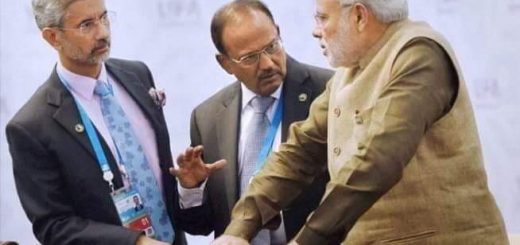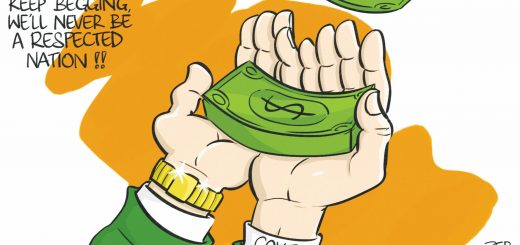Story of My Roots: Independence, Carnage, and the Final Triumph by Neelam Jain
The story of independence of India and the birth of Pakistan is one of the bloodiest sectarian violence, bloodbath, loot, rape and bone-chilling slaughter. It was witness to one of the greatest migrations in human history.
On the midnight of August 15, 1947, India’s first prime minister Pandit Jawaharlal Nehru addressed the nation with powerful lines “At the stroke of the midnight hour, when the world sleeps, India will awake to life and freedom……..” Unfortunately, she also awoke to untold deaths and massacre, abductions, fear and displacement. The partition of Punjab remains by far the bloodiest part of Indian history, the dirtiest and scariest of all, tagging along as it did with the joy of freedom.
The division of British India into India and Pakistan led to the dislocation of between twelve and sixteen million people, a million violent deaths, and the abduction and rape of seventy-five thousand women, many of whom were then disfigured or dismembered. Families were divided, properties lost and homes destroyed. It left both countries with deep psychological and political scars.
Though the struggle for the independence of India had taken place over decades, the British authorities’ decision to grant sovereignty and ultimately to divide the country was hurried through in a matter of months. Interestingly, the person who was behind India’s partition had never seen the country. A new boundary had to be urgently drawn up and the man chosen for the task had never been east of Paris. British barrister, Sir John Radcliffe arrived in India on July 8th, with Partition only 36 days away.
Radcliff was commissioned to equitably divide 4,50,000 km sq of territory with 88 million people. With no complete information about the geography of India, he divided the two nations on the basis of maps, castes and religions.
“When they partitioned, there were probably no two countries on Earth as alike as India and Pakistan,” said Nisid Hajari, the author of “Midnight’s Furies: The Deadly Legacy of India’s Partition.” But after partition was announced, the subcontinent descended quickly into riots and bloodshed. Hindus and Sikhs fled Pakistan, a country that would be Muslim-controlled. Muslims in modern-day India fled in the opposite direction.
Punjab and Bengal, the two provinces that were divided, were the most affected but so were other parts of the country. Mixed populations comprising of Hindus, Muslim, Sikh, Christian etc were more the norm than not in rural and urban India.
Government documents accessed by researchers provide blood-curdling details of what happened during partition, as well as alphabetical lists of the names of women who were abducted. Witnesses have said that trains crossing the new border were filled with corpses from either side. People were “cut down like carrots and radishes,” an expression often used in many Indian family stories. On the other side, they would become refugees — penniless, homeless strangers in a strange land.
Hundreds of thousands of Indians have remained trapped in their private pain, carrying the trauma of homes and families lost. The generation that witnessed the gory division, migration and the bloodbath is dwindling and those who remain are a treasure trove of that part of history that continues to define geo-political reality of the subcontinent even today.
Silence has been a way of coping that enabled the people to survive and carry on with the business of life. Many of my interviews began with people questioning the need to rake up the past. However, these are the stories of some of those who survived.
KASHMIR 1947
While some people and institutions lately have woken up to chronicle the accounts of witnesses from Punjab, there still remains an unwritten and less-discussed part of history – a parallel drama of blood and rape enacted in another state of India.
In August 1947, when India became independent, all 565 princely states had to decide whether to join the Dominion of India or Pakistan.
The princely state of Jammu and Kashmir had not decided which side to join by August 1947. Pakistan believed that J&K should belong to their side since it housed a large number of Muslims. Maharaja Hari Singh, the ruler of Jammu and Kashmir, could not decide which country to join. While he was a Hindu, his population consisted of a Muslim majority. “He therefore did nothing,” wrote Victoria Schofield, author of Kashmir in Conflict.
In the meantime, Kashmir faced invasion from Pashtun tribesmen belonging to Pakistani territory in October, 1947. Hari Singh wrote to Mountbatten, requesting intervention. Hari Singh mentioned that massive, loot, rape and destruction of life were taking place in Kashmir. Failing to maintain the law and order situation, the ruler asked for military assistance from India. “Afridis, soldiers in plain clothes, and desperadoes with modern weapons have been allowed to infilter into the State…” wrote Maharaja of Jammu and Kashmir, Hari Singh in a letter to Lord Mountbatten, Governor General of India, on Oct 26, 1947. “The number of women who have been kidnapped and raped makes my heart bleed,” he said.
KASHMIR 1989
Many Kashmiri Pandits who lived through and survived the bestial tribal attack and the concomitant rape and arson of 1947, relived the trauma once again in their life-time when they were driven out of their homes in 1989. The threats had been coming in for a long time, but the night of January 19, 1990, is said to have seen a demented assault of a different level. For the Kashmiri Pandits the sense of being uprooted was felt very strongly as there was a complete change in ecology and loss of status, property, and prestige. Even 28 years later, Kashmiri Pandits shiver remembering the night that forced them into exodus.
Survivors, both, of 1947 bloodbath– from Punjab and Kashmir, and the 1990 mass exodus, have moved on with their lives often to achieve greater glories. Yet it remains a story of great human pain and hardship – both at the emotional and physical level. It is also an amazing tale of supreme endurance and triumph of human spirit. Most of these people I have spoken to have not had the western luxury of going in for a therapy to get over their life-altering experiences. If they carried the wounds of a tumultuous childhood they hid them well. All the people I talked to, spoke of their past with an unbelievable level of detachment. It has left me awe-struck at the resilience of human spirit.






A very vivid and hair-raising narration.